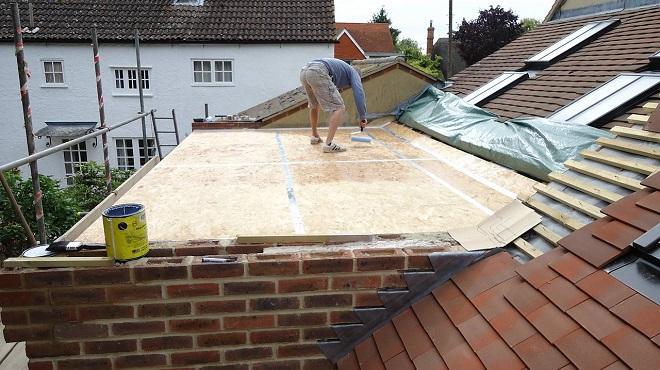The roof of a house is not only a protective covering but also a design element that significantly impacts the overall aesthetic and functionality of a home. In some cases, homeowners may consider replacing a flat roof with a pitched roof to address structural issues, enhance energy efficiency, or achieve a different architectural style. This article explores the reasons for replace a flat roof with a pitched roof, the challenges involved, and the key steps in the conversion process.

Why Replace a Flat Roof With a Pitched Roof?
1. Structural Issues
Flat roofs are more prone to water pooling and leakage compared to pitched roofs. If your flat roof has experienced persistent leaks or structural damage, replacing it with a pitched roof may provide a more robust and reliable solution.
2. Improved Energy Efficiency
Pitched roofs offer better insulation and ventilation options, which can improve energy efficiency and reduce heating and cooling costs. This can be especially beneficial in regions with extreme temperatures.
3. Aesthetic Preference*
Some homeowners prefer the aesthetic appeal of a pitched roof over a flat one. A pitched roof can add character and charm to a home’s exterior, giving it a more traditional or classic appearance.
Challenges and Considerations
1. Structural Assessment*
Before embarking on a flat-to-pitched roof conversion, it’s crucial to conduct a thorough structural assessment of your home. A pitched roof places different loads on the supporting walls and foundation compared to a flat roof. An engineer or architect can evaluate whether your existing structure can accommodate the change.
2. Permits and Regulations*
Check with your local building department for permits and regulations related to roof conversions. Some areas may have specific requirements regarding roof designs, slopes, and materials.
3. Budget and Cost*
Converting a flat roof to a pitched roof is a significant construction project and can be costly. Ensure that you have a well-defined budget in place, taking into account all expenses, including materials, labor, permits, and potential unforeseen issues.
The Conversion Process
1. Demolition and Removal*
The first step is to remove the existing flat roof materials, including the roofing membrane, insulation, and decking. This involves a careful demolition process to avoid damaging the underlying structure.
2. Structural Modifications*
Depending on the structural assessment, modifications may be required to support the new pitched roof. This could include reinforcing walls, adjusting load-bearing beams, or adding additional support.
3. Framing and Decking*
Once the structural modifications are complete, the framing for the pitched roof is installed. This includes rafters, trusses, and decking. Proper framing is essential to ensure the roof’s strength and integrity.
4. Roofing Material Selection*
Choose roofing materials that suit your design preferences and climate. Common options for pitched roofs include asphalt shingles, metal roofing, clay or concrete tiles, or cedar shakes. Consider factors like durability, aesthetics, and maintenance requirements.
5. Roof Installation*
The selected roofing materials are installed according to manufacturer guidelines and local building codes. Proper installation is crucial to prevent leaks and ensure the roof’s longevity.
6. Insulation and Ventilation*
Proper insulation and ventilation are essential for a pitched roof. Insulation helps maintain a comfortable interior temperature, while ventilation prevents moisture buildup in the attic space.
7. Finishing Touches*
Complete the conversion with finishing touches such as gutters, downspouts, fascia, and soffit. These components not only enhance the roof’s appearance but also contribute to its functionality.
Conclusion
Replace flat roof with a pitched roof is a significant home improvement project that requires careful planning, structural assessment, and adherence to local regulations. While it can address structural issues, improve energy efficiency, and enhance aesthetics, it is essential to work with experienced professionals who can guide you through the conversion process. With proper planning and execution, a flat-to-pitched roof conversion can transform your home, providing durability, functionality, and curb appeal for years to come.



Leave a Reply